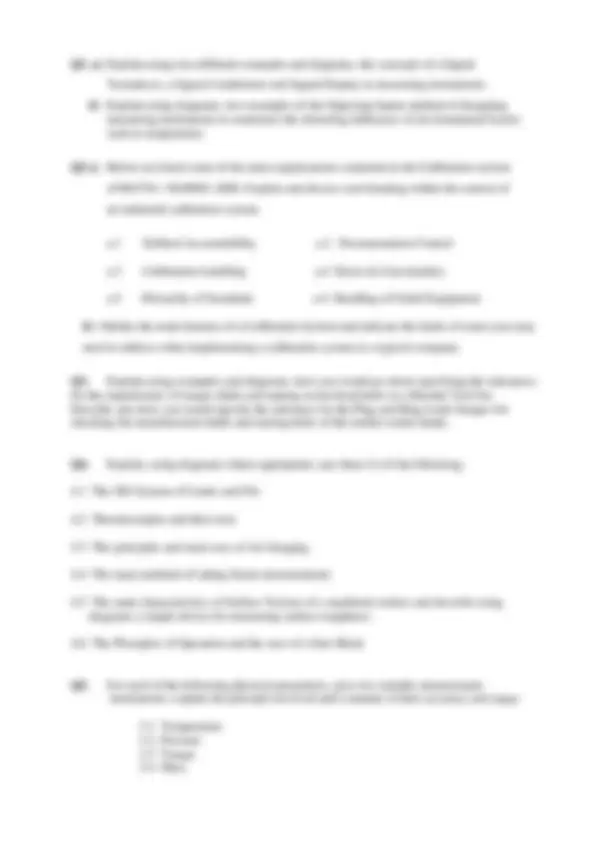



Study with the several resources on Docsity

Earn points by helping other students or get them with a premium plan


Prepare for your exams
Study with the several resources on Docsity

Earn points to download
Earn points by helping other students or get them with a premium plan
Community
Ask the community for help and clear up your study doubts
Discover the best universities in your country according to Docsity users
Free resources
Download our free guides on studying techniques, anxiety management strategies, and thesis advice from Docsity tutors
Main points of this past exam are: Defined Accountability, Diagrams,, Signal Conditioner, Transducer,, Signal Display, Defined Accountability, Calibration Labelling, Hierarchy of Standards, Handling of Failed Equipment, Errors and Uncertainties
Typology: Exams
1 / 2

This page cannot be seen from the preview
Don't miss anything!


Semester I Examinations 2008/ 2009
Exam Code(s) 1DQ131, 2BI
Exam(s) Higher Diploma in Quality Assurance 2 nd^ Year Industrial Engineering
Module Code(s) IE884 & IE Module(s) Measurement and Calibration
Paper No. 1
External Examiner(s) Prof. Jiju Antony Internal Examiner(s) Dr D. O’Sullivan Mr J. Cunningham Dr. P. Donnellan
Instructions: Candidates should attempt to answer three questions. All questions carry equal marks. For Questions with a) & b) parts, part b) carries 60% of the marks for that question
Duration: 2 hours
No. of Pages 2 Department(s) Industrial Engineering Course Co-ordinator(s) Dr Pat Donnellan
Requirements :
Q1. a) Explain using two different examples and diagrams, the concepts of a Signal
Transducer, a Signal Conditioner and Signal Display in measuring instruments. b) Explain using diagrams, two examples of the Opposing Inputs method of designing measuring instruments to counteract the distorting influences of environmental factors such as temperature.
Q2 a) Below are listed some of the main requirements contained in the Calibration section
of BS5781 / ISO9001-2000. Explain and discuss each heading within the context of an industrial calibration system.
a.1 Defined Accountability a.2 Documentation Control
a.3 Calibration Labelling a.4 Errors & Uncertainties
a.5 Hierarchy of Standards a.6 Handling of Failed Equipment
b) Outline the main features of a Calibration System and indicate the kinds of issues you may need to address when implementing a calibration system in a typical company.
Q3. Explain using examples and diagrams, how you would go about specifying the tolerances for the manufacture of torque shafts and mating socket head holes in a Ratchet Tool Set. Describe also how you would specify the tolerance for the Plug and Ring Limit Gauges for checking the manufactured shafts and mating holes of the ratchet socket heads.
Q4. Explain, using diagrams where appropriate, any three (3) of the following;
4.1 The ISO System of Limits and Fits
4.2 Thermocouples and their uses
4.3 The principles and main uses of Air Gauging
4.4 The main methods of taking Strain measurements
4.5 The main characteristics of Surface Texture of a machined surface and describe using diagrams a simple device for measuring surface roughness.
4.6 The Principles of Operation and the uses of a Sine Block
Q5. For each of the following physical parameters, give two suitable measurement instruments; explain the principle involved and comment of their accuracy and range;
5.1 Temperature 5.2 Pressure 5.3 Torque 5.4 Mass